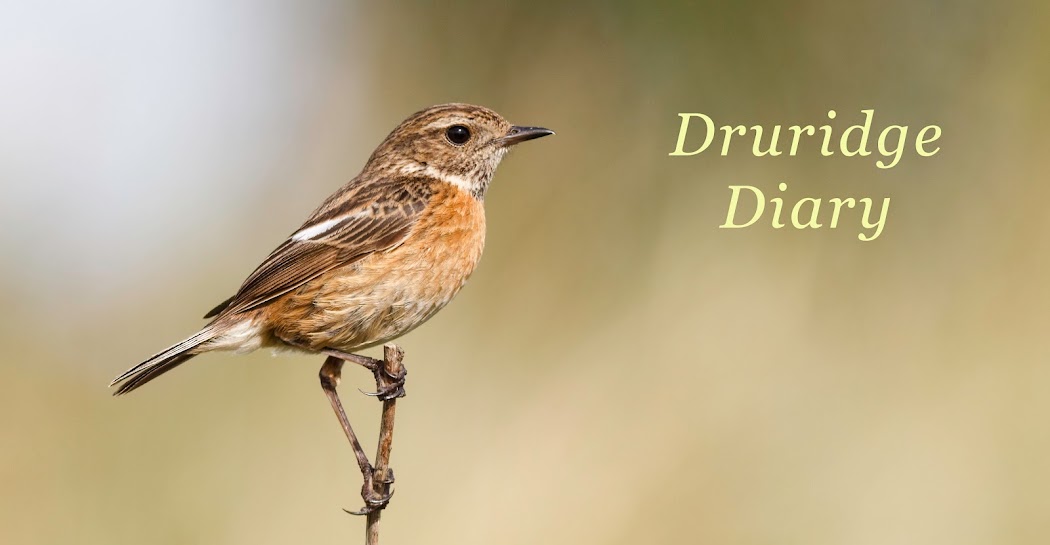Midsummer night, the summer solstice, everything must've been aligned and luck was on my side.
A beautiful evening, the wind had dropped, the sky, and the sea, were pink and I just watched a minke whale making its way south and had watched a merlin through hunting through the dunes and I was still birding at nearly 10pm. I headed to my car a happy patch watcher.
I was just about to leave when a couple came along the road, headed for the path to the hides - Richard Hopwood and his partner Sharon. They proceeded to tell me they were trying to get hold of Alan Tilmouth as they were sure they'd just seen a night heron flying over the Budge fields. Their description sounded good, Sharon thought it might have landed in the corner of the budge fields so we headed that way. Nothing from the Little Hide, so I suggested we go along the path to the corner of the Big Pool as that was more likely habitat. We heard it calling before we got there.
We were no sooner scanning the big pool when both Richard and I found our bird - perched on a tree stem just above the water in the north west corner of the pool. We got the scope on it, confirmed ID and put the news out. It was 9.53pm!
Black-crowned Night Heron - in fine breeding plumage, lovely long white plumes from the crown, the red eye just visible in the fading light. What a bird! It continued to call, every 10-20 seconds or so.
Here is a sound recording
 |
| best effort of a digi-scope shot in fading light. |
I took a short video
We watched the bird for 20 minutes or so, it didn't move far from the branch and then, it took flight, calling as it flew, away to the southeast. We lost it from sight, but the calls seemed to move more to the north east, then silence. We assumed it had gone.
A great end to the evening for the three of us.
Part of a mini-influx of this species, probably due to habitat loss on the continent due to drought. The way the bird was constantly calling, I thought it could be a male looking for a mate.
A new bird for the patch, taking my patch list to 255 and the overall patch list to 275. I've only seen one night heron in Northumberland before this, a juvenile which was at Cresswell Pond for a few days in the autumn of 1997.
I had another first for the patch last week - a new hoverfly. A Parhelophilus species, sadly it can't be got to species from the photos, but certainly a new hover for the patch.
 |
| Parhelophilus sp on Water Hemlock Dropwort |




















